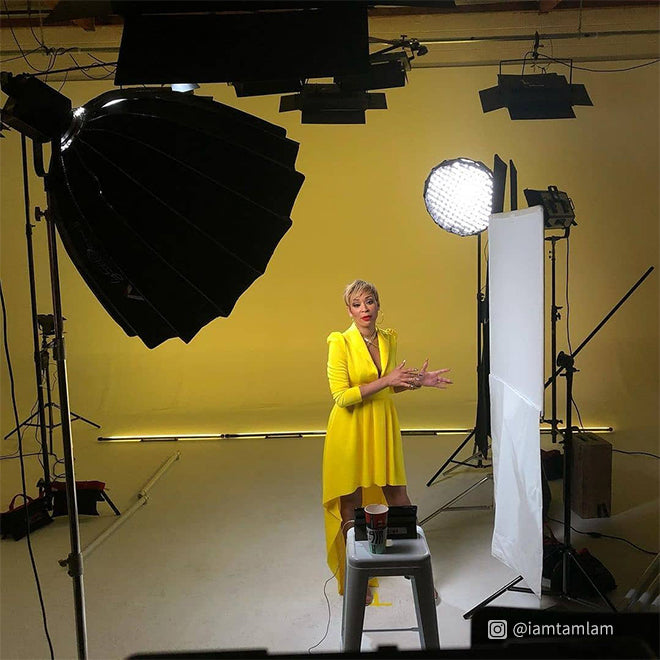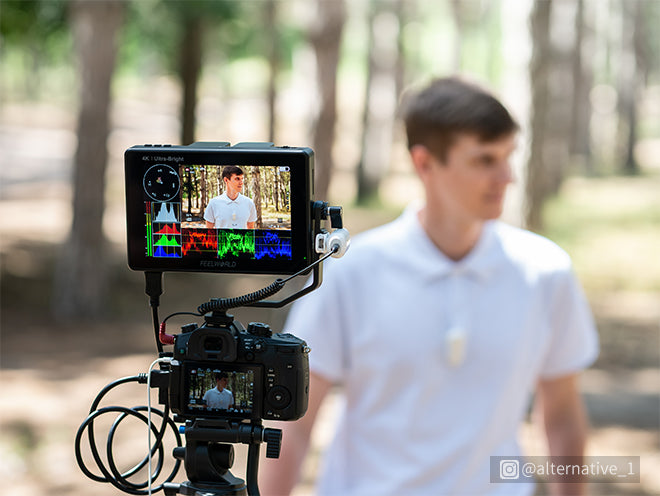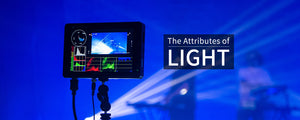The Attributes of Light and Check Light with Field Monitor
Jun 29, 2021
Lighting is one of the most challenging aspects in video production, but the right equipment and knowledge of the main attributes of light could make great lighting possible in any scene. Light has four attributes you can work with to make your scenes look the way you intend. The color, intensity, quality and direction of your light sources all play a role in determining the overall look of your video. Whether your goal is a contrasty film noir scene or a flat lifeless office scene, it’s your job to light it properly so your camera will capture the results you need. Now read below article to get the basic idea of lighting.
Color
Understanding how color and light work is essential to successful lighting. There are two factors to consider: getting colors to look natural, and using color to set the mood of a scene. Achieving natural looking colors in your footage has everything to do with the white balance you set on your camera and what’s referred to as the color temperature of the light sources in your scene. All light sources have a color temperature, which is measured in degrees kelvin. It’s a bit confusing, but this has nothing to do with how hot a light source is to the touch. Instead, light sources with different color temperatures produce a wide range of color casts that you must counteract with your white balance.
Sources like a lit match or tungsten lights have lower color temperatures at or below 3200k and give a amber or reddish cast, while sources with higher color temperatures like direct sunlight or shade have color temperatures of 5600k and above and give off a more bluish cast. The higher the color temperature, the colder the hue, and the bluer it is.The opposite is warmer. And you can use color temperature correction gels to convert color temperature from one to another.

Intensity
The intensity of a light refers to its brightness. The intensity of the source itself is measured in lumens, while footcandles or lux measures the intensity of light hitting a subject. If your light intensity is too low, you have to increase the gain or ISO of your camcorder in order to record correctly exposed video. This can increase the amount of noise in your footage. If it’s too high, you’ll have to close your iris down, increase your shutter speed or ideally, use a neutral density filter to reduce the amount of light passing through your lens. Luckily, you can control the intensity of a light source with a few different tools. One option is to switch the wattage of your bulb. Another is placing a neutral density gel over a light or window, which will cut the intensity without affecting its color temperature. A scrim has a similar effect. You can also use a dimmer, but be aware that this will shift the color temperature of a tungsten light. Some LED lights have built in dimmers that don’t cause this shift. Finally, you can simply adjust the distance of your light from your subject.

Quality
A third critical attribute of light you can control is quality. The quality of a light source affects how the highlights and shadows look in your scene. The two common terms used to describe light quality are hard and soft. Hard light is produced by small sources and creates crisp, sharp transitions between highlights and shadows. Two good examples of a hard light source are the sun at noon, and a clear incandescent bulb. Soft light is produced by larger sources, and produces diffused gradual transitions between highlights and shadows. Essentially, soft light will “wrap” around your subject and illuminate the shadows to a certain extent. Two examples of soft light sources are overcast skies and softboxes. Soft light is scattered, and therefore very difficult to shape and control.

Direction
The fourth attribute of light is direction, or angle. This is a crucial component to achieving realistic lighting. The direction your most intense light (commonly called the key light) comes from determines where your primary shadows will fall. In other words, if you want to mimic sunlight coming in through a window, you don’t want to place a hard light directly above your subject. You also want to consider the effect that direction has on your subject. Lighting a face from the front at eye level will create an extremely flat looking image, while light coming from the side will reveal texture and shape.

Knowing the basic attributes, you must wondering if there is a slight way to check the light, especially in sunlight. FEELWORLD monitors have assist function like scopes, false color and zebra to help you check the exposure and correct the color. What's more, FEELWORLD LUT6, LUT6S has 2600nit ultra brightness and LUT7, LUT7S , LUT7 PRO, LUT7S PRO has 2200nit ultra brightness, which allows you view clearly in the sunlight.


